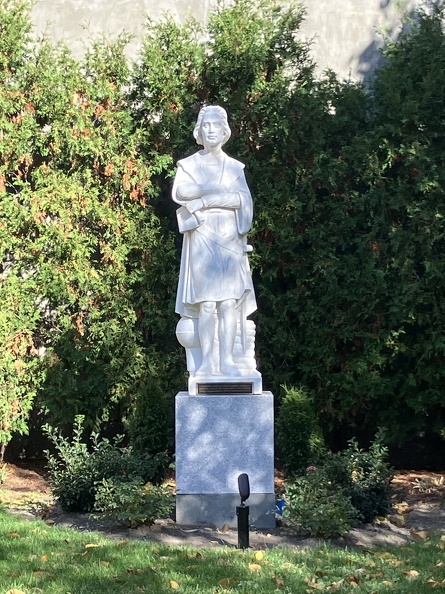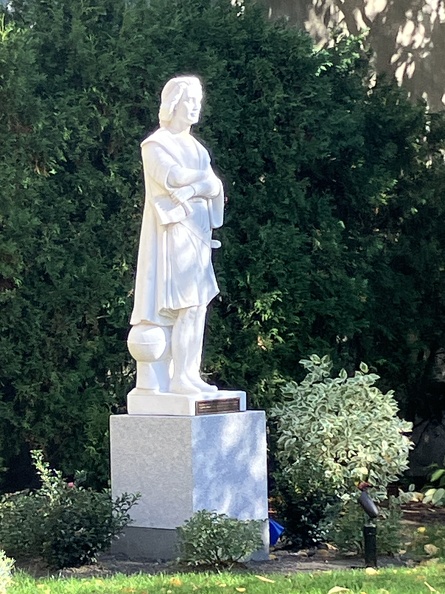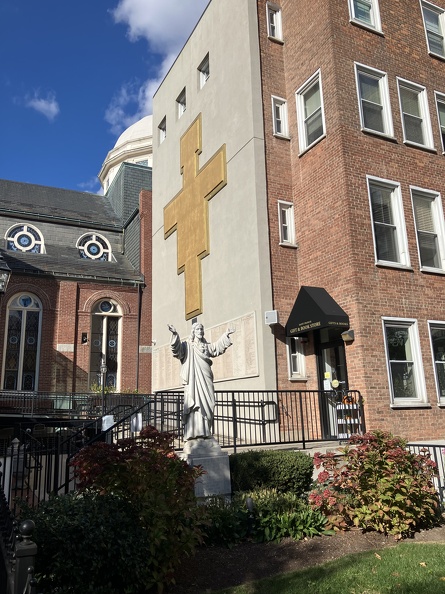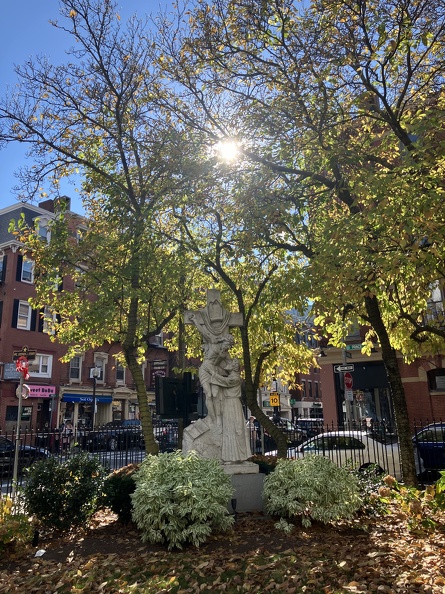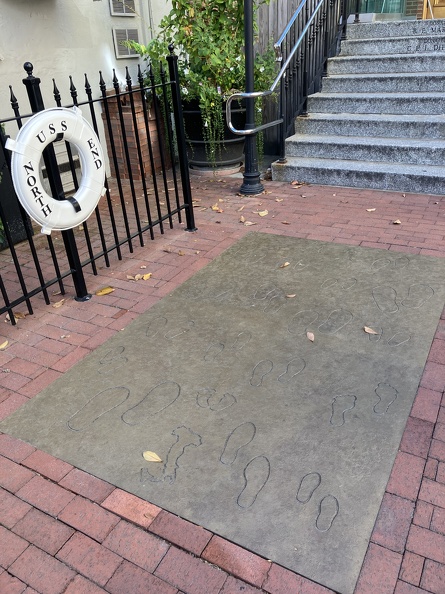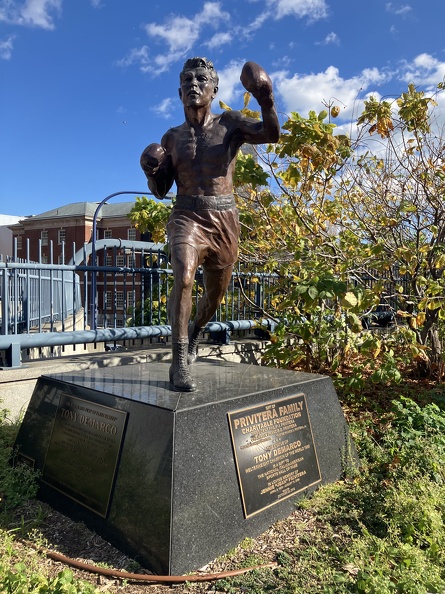I am happy today.
This is the first time in my life that I have voted for a presidential candidate who won. In 2008, the first year I was eligible to vote, I voted for libertarian candidate Bob Barr. In 2012, I voted for libertarian candidate Ron Paul. In 2016, I voted for libertarian candidate Gary Johnson. I was happy that Trump won, and definitely preferred him to Hillary Clinton, but due to the fact that all of Massachusetts’s electoral votes are basically guaranteed to always go to the democratic candidate, I continued my tradition of voting third party. In 2020, I voted for Trump, and he lost. In 2024, I voted for Trump and – it feels both strange and amazing to type these words – he won.
It is a beautiful day. Things feel lighter, more hopeful. I feel that I can breathe again. A noose is no longer tightening around my throat, the heavy boot of tyranny no longer stomping on my face. For four years, I never thought that this result would happen. To some extent, it feels magical, unreal, almost like a dream. Part of me feels that any moment I will wake up, and this beautiful reality will be shattered.
I am proud of my country today. For four years, the sight of the American flag, the sound of patriotic music, and the mention of the Fourth of July made me feel more pain than pride. For me, these things signified the country that had elected a government determined to force people to undergo a medical procedure against their will and to destroy everything that makes life worth living. But now I feel much more positively towards America. Self-righteous bullies have spent four years pompously lecturing about “our democracy,” but now the very democracy that they’ve spent all this time worshipping and fetishizing has elected Donald Trump! Perhaps this country, this democracy, isn’t so bad after all.
I admit that Trump is not perfect. He almost certainly does not care about statues with the same intensity as I do, or in the same way that I do. He cannot fully reverse the atrocities that have been committed against historical figures, and by extension against myself. He may not even partially reverse them. But for today at least, it feels like a healing balm has been smoothed over my wounds. This election result is the most significant good thing that has happened in a very long time. It does not undo the pain, anguish, and trauma that I’ve experienced over the past four years. But it helps. It really helps.
Four years ago, at this exact time of year, was the rock bottom of my life. Everything that made my life worth living had been destroyed, the historical figures that I love having been lynched, smashed to pieces, set on fire, beheaded, strangled, and drowned with complete impunity, and the people who committed these atrocities perceived as holding the moral high ground in the eyes of society. And by electing Joe Biden rather than Donald Trump, our country confirmed that they didn’t care about my pain, didn’t care about my perspective, didn’t care about the historical figures’ right to exist. Our country’s response to my pain was to inflict even more of it. Our country’s response to my (metaphorical) gaping, bleeding wounds was to rub salt in them. Seeing other people’s joy, exuberance, celebrations, and gloating, after the excruciating agony that I had experienced over the preceding months, was nothing short of soul-crushing.
Now, the situation is reversed. It’s the mirror image of that horrible time four years ago. I never thought that such a thing would happen, and I hesitate to type these words for fear that I will somehow jinx it. But the people who gloated so cruelly and gratuitously four years ago, who fell all over each other in their eagerness to shove their spiteful celebrations down my throat, lost. I won, and it is now my turn to gloat. Part of me wants to do exactly that. The people who hurt me deserve to be punished for their actions. Retribution, revenge, justice… these words are all synonyms to me, and all are completely justified in this situation. But another part of me sees the merits of what is commonly referred to as “taking the high road.” If I gloat as nastily as my enemies did, then that makes me like them, at least a little bit. Part of me feels that the people who caused my pain deserve to experience the same pain in return, while part of me feels that no person deserves to experience pain so horrific.
Regardless, I am happy today. I intend to savor this feeling, to soak it in, to enjoy it for as long as I can. For the past four and a half years, positive experiences have been hard to come by for me. This is a big and important one, which I truly appreciate.
In an Instagram post which you can view here or below, Breitbart News described Trump’s victory as “indisputably the greatest political comeback in American history,” and I can’t help but agree. Trump is only the second president, after Grover Cleveland, to win two non-consecutive terms, and as the post mentions, he overcame “multiple prosecutions; two assassination attempts; censorship on social media; overt media bias; and even efforts to intimidate his lawyers.”
Breitbart’s mention of overt media bias is no exaggeration. Starting with their coverage of the capitol protest on January 6, 2021, the news media has completely given up on even pretending to be neutral. Their coverage of that protest was appalling, disgraceful, literally sickening, beyond unprofessional, and absolutely shocking to the conscience. Nearly 100% of their political coverage over the ensuing four years has fit those descriptions as well. Any semblance of neutrality, or professionalism for that matter, has completely vanished. Prior to 2020, the news media certainly had a progressive bias, but at least it was covert. Now their bigotry, their closed-mindedness, their utter contempt for anyone who deviates from their totalitarian social norms, is naked, blatant, and on full display. I have been hurt, enraged, and traumatized dozens if not hundreds of times over the past four years thanks to the news media, and this is despite making the decision to almost entirely cease news consumption due to finding it so hurtful, enraging, and traumatizing. Every time I so much as glimpse a biased headline, I am reminded painfully of the fact that news consumption, previously an enjoyable and interesting way to gain information, has devolved into just another way for society to torment me by expressing its rejection and hatred.
Which brings me to the most amazing and remarkable thing about this election result: for possibly the first time in my life, the people who hurt me didn’t get what they wanted, and I did. The gloating “friends,” acquaintances, family members, and strangers on social media. The mindless conformists who displayed Harris/Walz signs on their lawns in order to remind me every time I walk down the street that they support the lynching of the man that I love. Democratic politicians, activists, and government officials determined to eradicate every last shred of diversity and individual liberty from the earth. Their despicable accomplices in the aforementioned news media, who have traumatized me dozens if not hundreds of times. Bullying prosecutors. Orwellian social media executives. Wannabee assassins. All of these people lost. And I won. That’s something that has never happened to me before, and I am in awe of it.
One final observation about Trump’s victory is that it provides a bit of justice, even if only small, for the historical figures. Particularly the statue of Christopher Columbus who stood at the Minnesota state capitol until being lynched by a mob of bigoted bullies in summer 2020. Perhaps statues weren’t in the forefront of voters’ minds when they cast their ballots, but rather overshadowed by more mundane issues such as inflation, social security, immigration, and the economy. Regardless, the man who chose to allow this lynching to happen, and later to characterize it as an understandable act of civil disobedience, lost his bid to become vice president. So today I am thinking about Christopher Columbus of St. Paul, Minnesota. Nothing can undo the atrocity that was done to him, but today brings him a quantum of justice. He, and what was done to him, must never, ever be forgotten.


